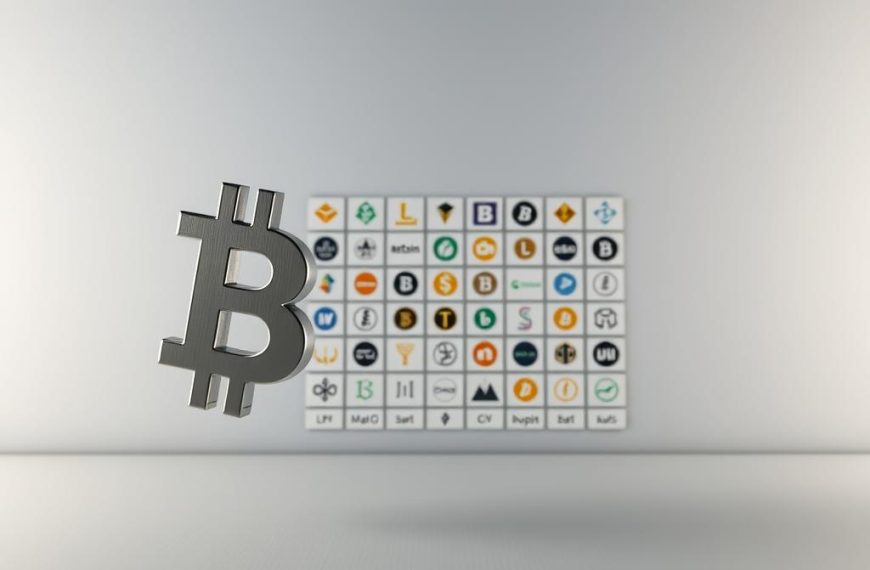Turning digital assets into spendable money is a common need for many crypto holders. Whether for daily expenses, investments, or emergencies, understanding the best cash-out methods ensures smooth transactions.
Four primary options exist: centralized exchanges, peer-to-peer platforms, Bitcoin ATMs, and specialized wallets like BitPay. Each method varies in speed, fees, and convenience.
Exchanges like Coinbase or Kraken offer bank transfers in 1-3 days. For instant access, Bitcoin ATMs provide cash but charge higher fees. Peer-to-peer trading allows flexible payment options, while BitPay Wallet stands out with Venmo integration and high daily limits.
Security remains crucial across all methods. Always verify platforms, enable two-factor authentication, and use trusted wallets. This guide explores each approach in detail to help choose the right solution.
Can I Turn Cryptocurrency into Cash?
Converting digital coins to traditional money is a straightforward process with multiple options. From exchanges to peer-to-peer platforms, each method balances speed, cost, and convenience.
Legal and Tax Implications
The IRS treats crypto as property, meaning sales trigger capital gains tax. In the U.S., Form 8949 is required for reporting transactions. India imposes a 30% tax on profits.
Always consult a tax professional to avoid penalties. Record transaction dates, amounts, and wallet addresses for accuracy.
Critical Considerations
Liquidity: High-volume exchanges like Coinbase process withdrawals faster. Check trading pairs (e.g., BTC/USD) for availability.
KYC: Most platforms require ID verification for bank account links. Peer-to-peer deals may allow anonymity but increase risk.
Regional limits: Some countries restrict fiat withdrawals. Confirm local laws before initiating transactions.
Hidden Costs and Security
Fees stack up—exchange charges (1–5%) plus network gas fees. Bitcoin ATMs cost 8–15%, making them pricey for large sell crypto orders.
Avoid unverified ATMs and P2P chargeback scams. Use escrow services and enable 2FA for security.
Using Centralized Exchanges for Crypto-to-Cash Conversions
High liquidity and FDIC protection make centralized exchanges a top choice for cashing out. Platforms like Coinbase and Kraken combine security with intuitive interfaces, ideal for beginners and experts alike.
Step-by-Step Process on Exchanges Like Coinbase
Converting crypto to fiat involves four steps:
- Deposit funds: Transfer crypto from your wallet to the exchange.
- Sell assets: Place a market/limit order for USD or other fiat.
- Link bank account: Verify details for withdrawals (1–3 business days).
- Withdraw cash: Initiate an ACH transfer (2–5 days processing).
Pros and Cons of Centralized Exchanges
Advantages:
- FDIC insurance covers USD balances up to $250,000.
- High liquidity for top coins like Bitcoin and Ethereum.
- 24/7 customer support for dispute resolution.
Drawbacks:
- Geographic restrictions (e.g., NY residents face limited options).
- Higher fees for altcoins with low trading volume.
Fees and Processing Times
Costs vary by platform. Coinbase charges a 1% spread plus $0.99–$2.99 per transaction, while Kraken’s fees start at 0.16% for high-volume traders.
| Exchange | Fee (BTC Sale) | Processing Time |
|---|---|---|
| Coinbase | 1% + flat fee | 2–5 days (ACH) |
| Kraken | 0.16%–0.26% | 1–3 days |
| Binance US | 0.50% | Instant–24 hours |
For urgent withdrawals, prioritize exchanges with instant options, though fees may be higher. Always confirm regional availability before trading.
Selling Bitcoin via Peer-to-Peer (P2P) Marketplaces
Peer-to-peer marketplaces offer direct deals between buyers and sellers, bypassing traditional exchanges. This method provides personalized rates and flexible payment options, from bank transfers to cash meetups. Platforms like Paxful and Binance P2P handle over $50M daily, proving their growing popularity.
How P2P Transactions Work
Escrow systems protect both parties during transactions. When selling Bitcoin:
- The platform locks your crypto until payment confirmation
- Buyers submit funds via agreed methods (Venmo, Zelle, etc.)
- You verify receipt before escrow releases coins
Binance P2P supports 300+ payment options, while decentralized platforms like Bisq require no KYC. Transaction speeds vary:
| Platform | Escrow Type | Average Completion Time |
|---|---|---|
| Paxful | Centralized | 15-90 minutes |
| LocalCryptos | Smart contract | 1-3 hours |
| Binance P2P | Platform-managed | 10-45 minutes |
Negotiating Rates and Avoiding Scams
Set competitive prices using CoinGecko’s spot price plus a 2-5% premium. Always check the buyer’s:
- Reputation score (minimum 95% positive)
- Completed trades (50+ preferred)
- Verification badges
For cash deals, meet at police stations and use UV detectors. Security measures prevent common scams like:
- Fake payment screenshots
- Chargeback fraud with reversible payments
- Counterfeit bills in face-to-face exchanges
Transfer funds only to your verified wallet address. Enable two-factor authentication on all accounts for added protection during P2P transactions.
Withdrawing Cash from Bitcoin ATMs
Bitcoin ATMs provide a physical solution for converting digital assets to paper money in minutes. These machines operate in retail stores and high-traffic areas, offering instant cash for a premium. However, fees can reach 25%, making them costlier than exchanges.
Locating and Using a Bitcoin ATM
Find nearby ATMs via apps like CoinATMRadar. Most machines support QR code scans from Ledger or Trezor wallets. Follow these steps:
- Select “Sell Bitcoin” and enter the amount.
- Scan your wallet’s QR code to transfer coins.
- Verify identity via SMS or ID scan for larger transactions.
- Collect cash from the dispenser.
A $500 Bitcoin sale at a Genesis Coin ATM nets $412 after fees—a 17.6% cut.
Limitations and High Fee Warnings
Daily limits range from $3,000 to $10,000, depending on verification tier. Coinme ATMs dominate U.S. metro areas but charge 12–25% per transaction. Additional risks include:
- Network congestion: Delays during bull markets.
- Out-of-cash errors: Verify receipts before leaving.
- Reversible payments: Avoid unverified buyers.
For lower fees, compare ATMs using fee calculators. Always double-check wallet addresses—errors are irreversible.
Converting Crypto to Cash with the BitPay Wallet App
BitPay stands out by merging crypto flexibility with traditional banking convenience. The app supports 15+ digital assets, including Bitcoin and Ethereum, with instant payouts to bank accounts or Visa debit cards. Users enjoy a seamless process to sell crypto without intermediaries.
Instant Bank Transfers and Debit Card Payouts
BitPay’s integration with prepaid cards like Netspend accelerates access to funds. Follow these steps:
- Link your debit card or bank account in the app.
- Select the crypto amount to convert, ensuring it meets the $30 minimum.
- Confirm the transaction with biometric approval for security.
For cross-border users, SEPA transfers enable EUR/GBP conversions at 1–2% fees. Compared to Coinbase’s 3-day ACH delays, BitPay delivers instant settlements.
Security and Troubleshooting
The self-custody wallet enforces two-factor authentication (2FA) and biometric logins. Common fixes for failed transactions include:
- Verifying memo fields for bank deposits.
- Checking daily limits (up to $100k for verified users).
“BitPay’s open-source code on GitHub ensures transparency, a rarity in crypto wallets.”
Whether for local spending or global transfers, BitPay Wallet offers a secure way to turn digital assets into crypto cash efficiently.
Alternative Option: Crypto-Backed Debit Cards
Crypto-backed debit cards bridge the gap between digital assets and everyday spending. These cards automatically convert holdings to fiat at point-of-sale, bypassing exchange delays. Top providers like RedotPay and Volet combine convenience with rewards, making them ideal for frequent users.
Top Cards Like RedotPay and Volet
RedotPay offers 1% cashback on all purchases, while Volet supports 50+ cryptocurrencies. Both charge 1.5% foreign exchange fees but waive annual costs. Key differences:
- Activation: Virtual cards work instantly; physical delivery takes 5–7 days.
- ATM limits: $500 daily withdrawals on basic tiers.
- Rewards: Outperform traditional cards with crypto-specific bonuses.
Spending Crypto Directly Without Bank Withdrawals
These cards simplify transactions by converting crypto to fiat in real-time. Restrictions include:
- Blocked merchant categories (gambling, crypto purchases).
- Geo-blocking bypasses via VPN for travelers.
“RedotPay’s instant virtual card feature is a game-changer for online subscriptions.”
For security, enable biometric verification and monitor unusual activity. Cards like Crypto.com’s Visa offer higher limits but require staking.
Understanding Fees for Crypto Cash-Outs
Fee structures significantly impact profits when liquidating digital assets. Whether using exchanges, ATMs, or peer-to-peer platforms, costs can vary from 0.1% to 25%. Smart comparisons help maximize returns.
Exchange vs. ATM vs. P2P Fee Comparison
Centralized exchanges like Coinbase charge 1.49% per sale, while Gemini ActiveTrader slashes rates to 0.25% for high-volume traders. Bitcoin ATMs average 15%, and P2P escrow services like LocalBitcoins add 1%.
| Method | Average Fee | Best For |
|---|---|---|
| Exchanges | 0.25%–1.49% | Large withdrawals |
| ATMs | 8%–25% | Instant cash |
| P2P | 1%–5% | Flexible payments |
Hidden Costs and Optimization Tips
Watch for spread manipulation on instant services. Network fees drop on Sundays due to lower congestion. Record all costs—they’re tax-deductible.
“A $10,000 withdrawal via ATM could cost $2,500 in fees—equivalent to a round-trip flight.”
Volume discounts and timing adjustments make exchanges the most economical method. Always calculate net proceeds before confirming transactions.
Tax Implications of Converting Crypto to Fiat
Navigating tax obligations is critical when liquidating digital assets. The IRS classifies crypto as property, triggering capital gains taxes upon conversion. Unlike stocks, wash sale rules don’t apply, creating unique tax implications.
- Form 8949 required for $20,000+ in annual transactions or 200+ trades
- State variations: 0% in Texas vs. 13.3% in California
- Mining income taxed as self-employment earnings
Cost basis methods impact liability:
- FIFO (default): First-purchased coins sold first
- Specific identification: Choose lots for optimal gains
“The IRS will mandate Form 1099-DA reporting for exchanges starting 2025, increasing visibility into crypto-to-fiat conversions.”
Audit red flags include:
- Large ATM withdrawals without receipts
- Discrepancies between reported and exchange-recorded transactions
- Unreported mining/staking income
Long-term investment holders benefit from 0-20% capital gains rates versus short-term ordinary income taxation. Professional tax software like TurboTax Crypto helps track cost basis across wallets.
Timing Your Crypto Cash-Out for Maximum Profit
Strategic timing boosts profits when liquidating digital assets. Market cycles and liquidity conditions create optimal windows for conversions. Analyzing historical data and current trends helps identify these opportunities.
Monitoring Market Trends and Liquidity
CoinGlass liquidation heatmaps reveal key support/resistance levels. These indicate potential price reversals where conversions become advantageous. High liquidation zones often precede 5-15% price swings.
CoinMarketCap volume rankings show real-time liquidity shifts. Top-tier exchanges like Binance maintain stable conversion rates. Smaller platforms may impose restrictions during volatility.
| Month | Avg BTC Price Change | Optimal Conversion Window |
|---|---|---|
| January | +16% | Week 3 |
| June | -9% | Pre-dip (Week 1) |
| October | +22% | Post-halving cycles |
Altcoins face liquidity crunches during bear markets. Ethereum and Solana typically maintain 85%+ exchange liquidity. Smaller-cap assets may require OTC deals for large conversions.
Over-the-counter desks benefit investment portfolios exceeding $500k. They offer:
- Price stability through block trades
- Reduced market impact fees (0.1-0.5%)
- Custom settlement terms
“Futures basis curves signal optimal timing—contango suggests holding, backwardation indicates conversion windows.”
Macroeconomic events like Fed rate decisions impact conversion timing. Crypto typically rallies 72 hours post-announcement. Track CPI reports and employment data for additional signals.
Security Best Practices When Cashing Out
Protecting digital assets during cash conversions requires strict security protocols. Hackers often exploit weak points in withdrawal processes, making proactive measures non-negotiable.
Wallet Strategies for Risk Mitigation
Segregate funds between hot and cold storage. Keep only 5-10% of assets in hot wallets for liquidity. Hardware options like Ledger or Trezor isolate private keys offline.
Enable address whitelisting with 24-hour delays for new withdrawal destinations. This prevents instant theft if credentials are compromised. For large transactions, use multi-signature wallets requiring multiple approvals.
Combatting Phishing and Fraud
Phishing attempts mimic legitimate platforms via fake emails or cloned websites. Always verify URLs and use bookmark navigation. Never share seed phrases—even with “support staff.”
Common scams include:
- SIM swap attacks: Replace SMS 2FA with Google Authenticator
- Malicious smart contracts: Revoke unused approvals monthly
- Fake escrow services: Confirm platform URLs via official channels
“A 2023 Chainalysis report showed 73% of crypto thefts occurred during withdrawal attempts.”
For peer-to-peer deals, use escrow services and verify buyer reputations. Enable biometric logins and monitor API keys for unauthorized access.
Privacy Considerations for Anonymous Cash-Outs
Anonymous cash-outs require specialized tools to prevent transaction tracing. While Bitcoin transactions are pseudonymous, Chainalysis and similar firms can deanonymize users through UTXO analysis. Privacy-focused solutions range from coin-mixing wallets to non-KYC platforms.
Wasabi Wallet implements CoinJoin technology, blending transactions with others to obscure origins. Each mix costs 0.3% of the transaction value but supports outputs as small as 0.01 BTC. For smaller amounts, Cash App allows $1,000 weekly withdrawals without full identity verification.
Decentralized Exchange Options
Platforms differ in privacy preservation:
| Service | Privacy Feature | Limitation |
|---|---|---|
| ThorChain | Native cross-chain swaps | Requires memo fields |
| Bisq | No KYC, Tor integration | 72-hour settlement |
| LocalMonero | Cash-by-mail escrow | 5% counterparty risk |
Cash-by-mail services use multi-signature escrow but require trusted intermediaries. Always verify PGP keys and seller reputations before transacting.
“2023 data shows 41% of mixed Bitcoin gets flagged by exchanges, forcing additional obfuscation layers.”
Tax reporting creates a paradox—privacy tools may trigger audits if withdrawals don’t match reported income. Puerto Rico’s Act 22 offers tax exemptions for crypto investors establishing residency, but requires full disclosure during application.
- IP masking: Always use VPNs or Tor when accessing mixing services
- Wallet hygiene: Never reuse addresses across transactions
- Compliance balance: Document mixed transactions as “private” in tax software
For optimal privacy, combine Wasabi Wallet with Bisq trades and cash withdrawals below KYC thresholds. Remember—even Monero transactions require careful spending patterns to avoid clustering.
Regional Availability of Cash-Out Methods
Access to crypto liquidation services varies significantly across U.S. states due to regulatory differences. While some regions embrace digital asset conversions, others impose strict limitations affecting bank integrations and platform access. This geographic patchwork requires careful planning for optimal withdrawal strategies.
US-Specific Options and Restrictions
Texas leads with crypto-friendly policies, allowing unlimited ATM withdrawals and exchange operations. Contrastingly, Hawaii restricts conversions through exchanges lacking state money transmitter licenses. New York’s BitLicense demands create hurdles—only 30 approved platforms operate statewide.
Key state comparisons:
- California: 7,000+ Bitcoin ATMs but requires $10,000+ transaction reporting
- Florida: No state tax on conversions, attracting crypto retirees
- Washington: Bans privacy coin trading on regulated platforms
Credit unions increasingly bridge gaps in regional availability. Alliant Crypto offers FDIC-insured accounts with instant conversions, while Navy Federal members access Coinbase integrations. These partnerships expand options where traditional banks restrict crypto dealings.
“FedNow’s 2024 integration will enable real-time crypto-to-fiat settlements, potentially bypassing traditional banking delays.”
Money transmitter licenses impact smaller platforms—only 22 states offer streamlined applications. This creates arbitrage opportunities; P2P premiums reach 8% in Mexico border states due to limited US-specific options.
| Region | ATM Density | Notable Restriction |
|---|---|---|
| Northeast | 12 per million | NY BitLicense |
| Southwest | 28 per million | AZ crypto tax exemptions |
| Midwest | 9 per million | NE blockchain bank charters |
Comparing Speed: Which Method Is Fastest?
Speed varies dramatically across crypto liquidation options, with some delivering funds instantly. Emergency needs demand different solutions than planned withdrawals. Understanding these differences prevents costly delays.
BitPay leads with instant withdrawals to debit cards, while exchanges like Coinbase take 1-5 days for bank transfers. Peer-to-peer platforms fall in between, typically completing within 24 hours. Each option suits specific scenarios:
| Method | Processing Time |
|---|---|
| BitPay Card | Instant |
| P2P (Escrow) | 1-24 hours |
| Exchange ACH | 1-5 business days |
| Wire Transfer | Same day (if before cutoff) |
For urgent needs, convert to USDC first. Stablecoins move faster between exchanges. This bridge tactic cuts settlement time by 50-70% compared to direct BTC sales.
Banking deadlines impact withdrawals. Transactions after 5pm ET often process next business day. Weekends add 48-hour delays for ACH transfers. Wire requests submitted before noon avoid this lag.
“ViaBTC’s accelerator prioritizes Bitcoin transactions during network congestion—critical for time-sensitive withdrawals.”
Balance speed with cost. Instant options like Bitcoin ATMs charge 8-25% fees. Planning ahead allows using slower, cheaper methods. Always verify platform status during market volatility—some pause withdrawals under stress.
Long-Term vs. Short-Term Crypto Investment Strategies
Market cycles favor patient investors—ETH stakers gained 5.2% monthly yields post-Merge versus traders’ volatile returns. A 2023 Cambridge study shows long-term vs short-term holders achieve 4.2x versus 1.8x average profits. This gap widens during bull markets when HODLing beats frequent portfolio churning.
Dollar-cost averaging smoothes exit strategies during price swings. Selling 10% monthly during rallies locks gains without mistiming peaks. Platforms like Coinbase automate this through recurring sell orders.
Staking creates investment strategies dilemmas—compound yields or liquidate? Post-Merge Ethereum offers 4-6% APY, but selling unlocks capital for new opportunities. Evaluate tax implications before unstaking, as some jurisdictions treat rewards as income.
“VC-backed projects average 18-month lockups, forcing early investors to use OTC markets or collateralized loans for liquidity.”
Bear markets demand tactical survival:
- Nexo’s crypto-backed loans provide cash at 0% APR for LTV under 20%
- Tax-loss harvesting offsets gains when rebuying after 30 days
- Stablecoin farming preserves capital during downturns
Inheritance planning requires secure storage solutions like steel seed phrase plates. Multi-sig wallets with time-locked transfers ensure heirs access assets without immediate risk exposure.
Monitor market health indicators like exchange reserves and futures funding rates. These signal optimal times to shift between accumulation and profit-taking phases across investment horizons.
Conclusion
Liquidating digital assets efficiently requires balancing speed, cost, and security. Exchanges offer low fees but slower processing, while P2P platforms provide flexibility with moderate risks. Bitcoin ATMs deliver instant cash at premium rates.
Emerging trends like FedNow integration promise faster settlements. Always test small transactions first to verify security protocols. Market cycles create windows for optimal exits—track indicators like exchange reserves.
For compliance, use the IRS crypto tax hub. Report scams to the CFPB database. Whether you convert bitcoin via exchanges or sell bitcoin peer-to-peer, prioritize platforms with robust protections.
As crypto cash options evolve, staying informed ensures profitable, secure conversions.













